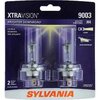Andrew Shadow
Site Supporter
That is contrary to and defeats one of the reasons that you listed for switching to LED bulbs, which is to reduce the power consumption. Using LED bulbs with resistors does not reduce the power consumption. It draws as much power as the stock bulbs do. The point of the resistor is to increase the power draw to maintain the same load on the flasher relay otherwise it won't flash properly. Installing an electronic flasher relay allows the proper flash rate without increasing power consumption. This allows the use of LED bulbs without resistors so that the power consumption is reduced.The factory flasher is still installed on my bike, never changed, and no they don't blink any faster than the halogens did. Just buy the bulbs with the resister made in the bulb.

 I think we have wasted more energy discussing this than is saved by LED lamps.
I think we have wasted more energy discussing this than is saved by LED lamps.